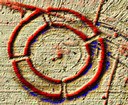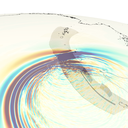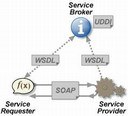Research

The Archaeological Prospection Group Munich at the Bavarian State Department for Monuments and Sites (BLFD) has been responsible for non-destructive geophysical survey methods for archaeology in Bavaria since 1982. In cooperation with the Institute of Geophysics, LMU Munich, development and adaptation of geophysical instruments as well as comprehensive research on the magnetic properties of soils are the fundamental objectives of the group. [more]
 The Earthquake Physics group focus on understanding the physics of earthquakes using numerical models, theoretical analysis and observations from natural earthquakes and laboratory experiments. We study geophysical problems on a range of scales, from earthquake-tsunami interaction in subduction zones to fracture activation in geo-reservoirs. Our research is distinguished by large-scale earthquake scenarios of unforeseen degree of realism realised on some of the largest supercomputers worldwide. We work on modern software packages for earthquake simulations ("SeisSol" and "ExaHyPE") and engage in large-scale infrastructure projects. [more]
The Earthquake Physics group focus on understanding the physics of earthquakes using numerical models, theoretical analysis and observations from natural earthquakes and laboratory experiments. We study geophysical problems on a range of scales, from earthquake-tsunami interaction in subduction zones to fracture activation in geo-reservoirs. Our research is distinguished by large-scale earthquake scenarios of unforeseen degree of realism realised on some of the largest supercomputers worldwide. We work on modern software packages for earthquake simulations ("SeisSol" and "ExaHyPE") and engage in large-scale infrastructure projects. [more]
 Taking a broad approach the term GeoComputing can be interpreted as the application of techniques from the fields of Informatics and Scientific Computing to problems in the Geo Sciences. The importance of GeoComputing is constantly growing for two reasons: [more]
Taking a broad approach the term GeoComputing can be interpreted as the application of techniques from the fields of Informatics and Scientific Computing to problems in the Geo Sciences. The importance of GeoComputing is constantly growing for two reasons: [more]
 Geodynamics is concerned with the physical processes that drive motion like mountain building or plate tectonics in the Earth and planets. By its nature it is highly interdisciplinary, and provides the link between such diverse areas in the Earth sciences as tectonics, paleomagnetism, seismology, mineral physics, geochemistry or geodesy. [more]
Geodynamics is concerned with the physical processes that drive motion like mountain building or plate tectonics in the Earth and planets. By its nature it is highly interdisciplinary, and provides the link between such diverse areas in the Earth sciences as tectonics, paleomagnetism, seismology, mineral physics, geochemistry or geodesy. [more]
 Paleomagnetism is a powerful tool for deciphering the deformation history of rocks and reconstructing plate motions. Magnetic techniques can also be used to investigate climate change, through susceptibility records, or hydrologic processes, via alteration and secondary growth of magnetic minerals. By studying reversal frequency, paleointensity, secular variation, etc., one can unravel the thermal history of the Earth, the nature of the D” boundary layer, and the origin of the geodynamo, which Einstein considered one of the most important unsolved problems in physics. [more]
Paleomagnetism is a powerful tool for deciphering the deformation history of rocks and reconstructing plate motions. Magnetic techniques can also be used to investigate climate change, through susceptibility records, or hydrologic processes, via alteration and secondary growth of magnetic minerals. By studying reversal frequency, paleointensity, secular variation, etc., one can unravel the thermal history of the Earth, the nature of the D” boundary layer, and the origin of the geodynamo, which Einstein considered one of the most important unsolved problems in physics. [more]
 The emphasis of our research activities lies in the area of computational seismology, i. e. the development of numerical methods for computing seismic wave propaqation and rupture processes. Furthermore, tomographic methods based on these achievements allow us to account for the three-dimensional character of earth models and wave fields. These methods comprise e. g. the finite difference method, pseudospectrals, finite (spectral) elements and fnite volumes. [more]
The emphasis of our research activities lies in the area of computational seismology, i. e. the development of numerical methods for computing seismic wave propaqation and rupture processes. Furthermore, tomographic methods based on these achievements allow us to account for the three-dimensional character of earth models and wave fields. These methods comprise e. g. the finite difference method, pseudospectrals, finite (spectral) elements and fnite volumes. [more]
